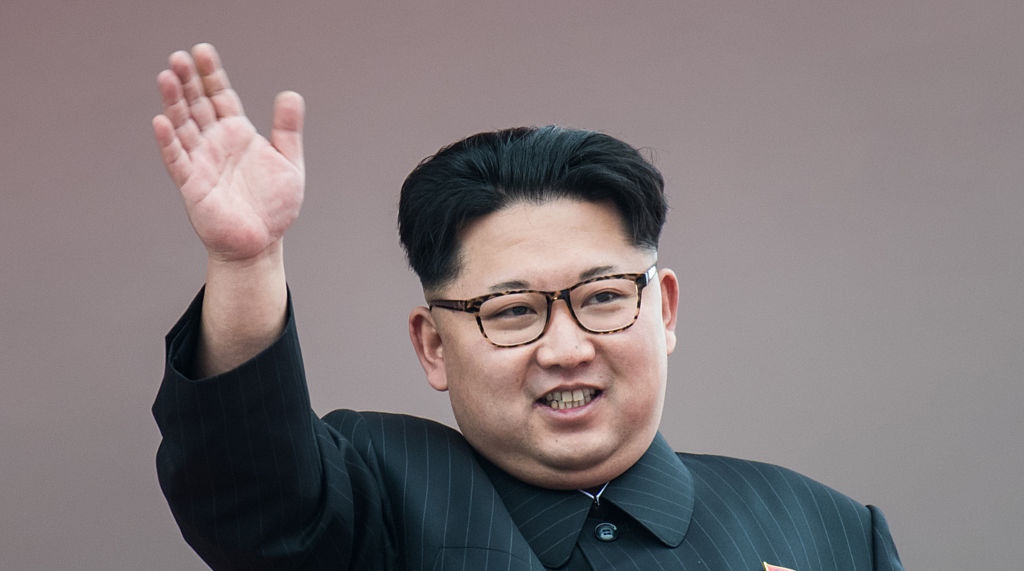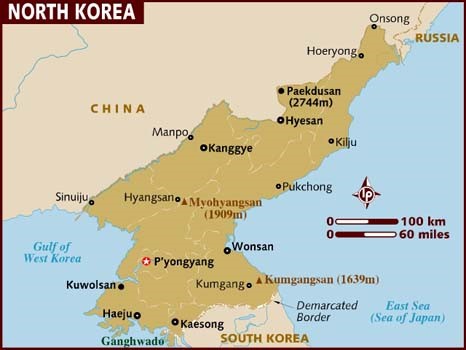Brink of war
December 4, 2017 | Expert Insights

US and South Korea are set to conduct air combat exercises. They are part of the annual Vigilant Ace 18 air combat drills. The drills come just days after North Korea test launched its most potent intercontinental ballistic missile (ICBM).
Background
North Korea has conducted multiple missile tests in 2017. Here are the sequences of the missiles launched by the nation in this year alone.
April 4, 2017: The isolated nation launched a medium-range ballistic missile. This missile reached the Sea of Japan.
April 16, 2017: In the same month, the country also launched a KN-15 medium-range ballistic missile. This missile however failed immediately upon launch.
April 29, 2017: For the third time in April, another missile was launched from Bukchang in the South Pyeongan province. This one also failed after takeoff. This launch was timed just hours after a meeting of the UN Security Council condemned North Korean missile and nuclear testing activities again.
May 14, 2017: The country test launched a Hwasong-12 missile. This missile flew for 30 minutes and covered a distance of 700 km (430 mi). It was able to reach an altitude of 2,000 km.
June 8, 2017: North Korea fired four anti-ship missiles off its east coast.
July 4th and 28th 2017: The country test launched two intercontinental ballistic missiles. The first one flew for approximately 40 minutes, falling 930 km (580 mi) away from the launch site in the Sea of Japan. The second one reached an altitude of 3,000 km (1,865 mi).
On August 26th, 2017 alone the nation launched three short-range missiles. One of the missiles blew almost immediately after take off but the other two were deemed successful.
In September 2017, fired a Hwasong-12 rocket over a missile flew over Japan. The missile was fired from near the nation’s capital, Pyongyang and reportedly travelled a distance of more than 2,700km. It reached an altitude of about 550km. It flew over Erimomoisaki on the Northern Island of Hokkaido before falling into the Pacific Ocean. It broke into three pieces and fell into North Pacific Ocean – 1,180km from the Japanese coast.
In 2017, United Nations imposed two rounds of fresh sanctions. In addition, US and South Korea have conducted military exercises and drills in response to North Korea’s provocations.

Analysis
US and South Korea are set to conduct air combat exercises. They are part of the annual Vigilant Ace 18 air combat drills. The drills come just days after North Korea test launched its most potent intercontinental ballistic missile (ICBM).
US F-22 fighter jets, stealthy F-22s and F35s are among 230 US and South Korean aircraft participating in the drills.
From the US side, White House national security adviser HR McMaster told a conference in California on Saturday that the chances for war on the Korean Peninsula grow daily. He said, "I think it's increasing every day, which means that we are in a race, really, we are in a race to be able to solve this problem. There are ways to address this problem short of armed conflict, but it is a race because he's getting closer and closer, and there's not much time left.”
"There are ways to address this problem short of armed conflict, but it is a race because he's getting closer and closer, and there's not much time left," McMaster said, referring to North Korean leader Kim Jong Un.
In addition, 12,000 personnel from the US and South Korea are participating in the weeklong exercise. "The US aircraft that have landed on South Korea include six F-22s, six F-35s, six EA-18Gs," a South Korean defense official told CNN. "More than 10 F-15Cs and F-16s have also been deployed for the drill."
Reports have since emerged, crew on board a Cathay Pacific plane flying over Japan reported a suspected sighting of last week's North Korean missile test. The airline confirmed them in a statement.
North Korea meanwhile in a statement responding to the drills, called the US President Donald Trump "insane”. It added the drills would "push the already acute situation on the Korean peninsula to the brink of nuclear war".
Assessment
Our assessment is that US has decided to up the ante in the current crisis by sending its top of the line F –22s and F-35`s in the largest concentration of fifth –generation fighters ever in South Korea. While North Korean military has capable anti – air weaponry, its radar system might not be able to detect the F-22`s and F-35`s which are cloaked with the worlds most advanced stealth coating, before a strike on those defensive system. However, threat remains with regards to EMP attack.








Comments